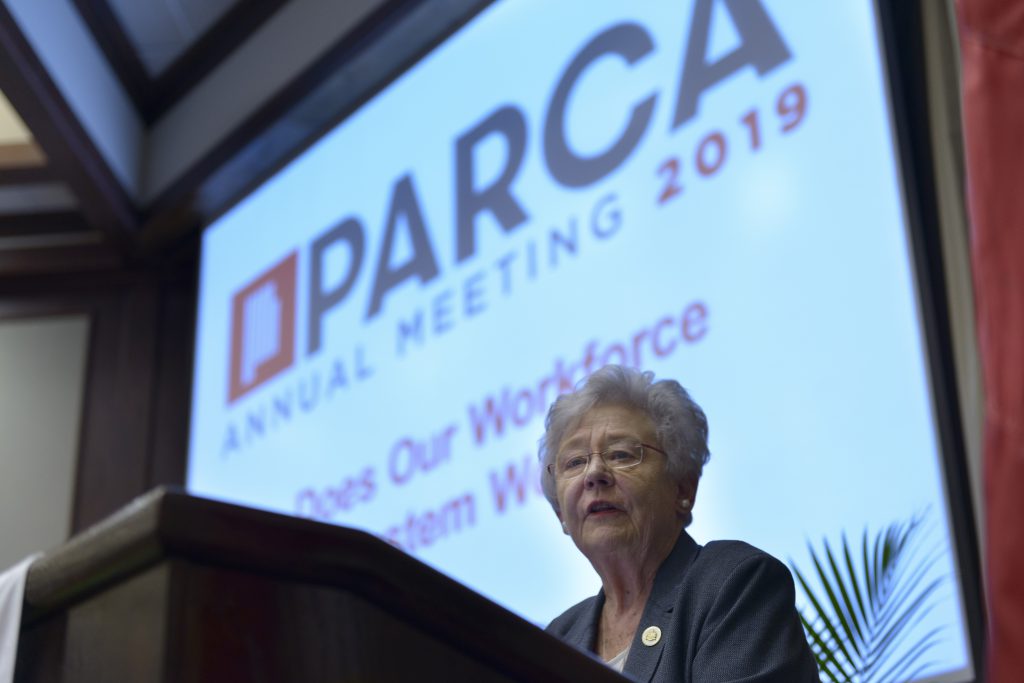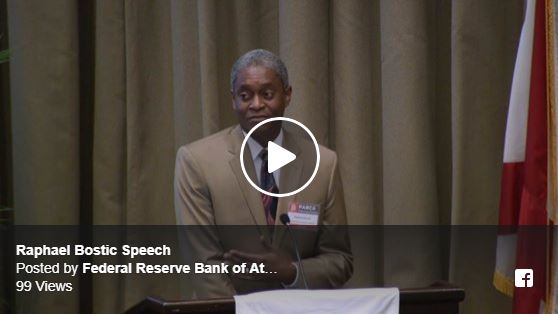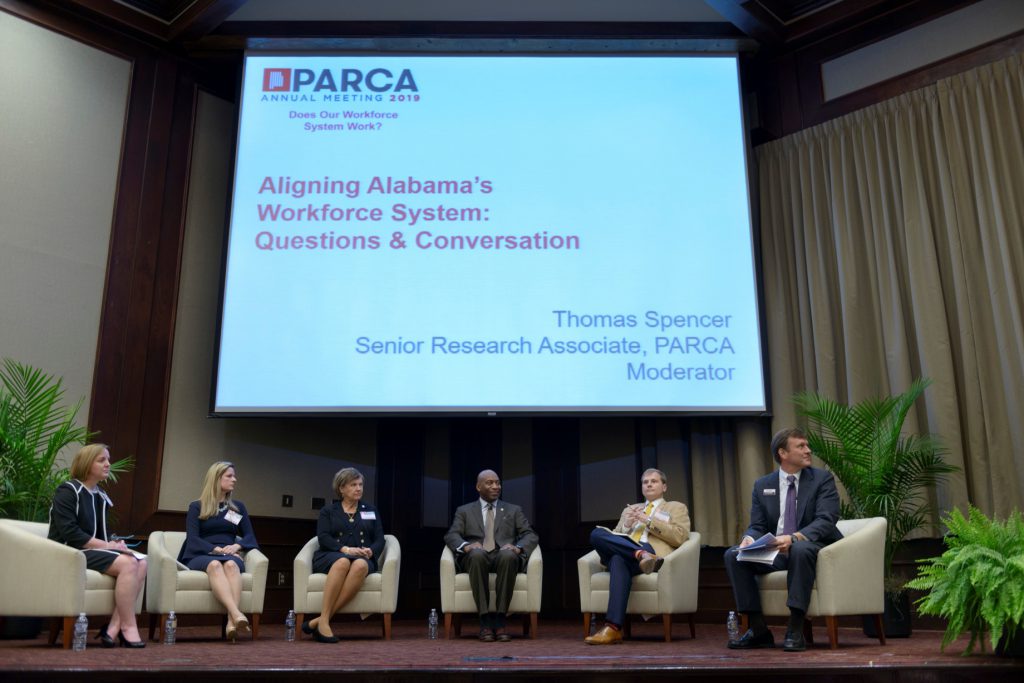
Alabama has a record low unemployment rate, with employers hungry for employees. It is a moment of great opportunity to move more Alabamians into the workforce with the skills and education they’ll need to succeed in the 21st-century economy.
“As we look to our future,” Gov. Kay Ivey said in her keynote address, “more than ever before, now is the time that we must be sure that our workforce is well-equipped to face the opportunities and the jobs of tomorrow.”
That opportunity and the state’s response were the central themes at PARCA’s 2019 Annual Meeting: Does Our Workforce System Work?, held Feb. 15 at the Harbert Center in Birmingham.
The sold-out meeting featured remarks by Raphael Bostic, President and Chief Executive Officer of the Federal Reserve Bank of Atlanta, a presentation by Chauncy Lennon, Vice President for the Future of Learning and Work at the Lumina Foundation, and was capped by Ivey’s address.
Bostic laid out the challenge by noting that while many signs point to economic prosperity for Alabama other measures are more vexing:
- Alabama has one of the lowest labor force participation rates in the U.S. A smaller share of the population participates in work than in most states.
- Alabama has one of the highest rates of disability among U.S. States. That’s true across all ages, non-Hispanic ethnicities, and education levels, and in both urban and rural areas.

Bringing those discouraged and disadvantaged workers into the workforce presents a prime opportunity for economic growth, Bostic said. If Alabama’s labor force participation rate matched the national average, the state could add 200,000 workers, helping to counter current and anticipated shortages.
If the workforce system can reach those individuals and help them build the knowledge and skills needed to earn a decent living, the whole state benefits through higher tax receipts and lower spending on public assistance, incarceration, and other programs, Bostic said
Bostic cited successful models for work-based learning in Georgia and the expansion of apprenticeship programs in South Carolina as examples of innovations in workforce development. The Federal Reserve and several partners are compiling research on improving workforce conditions for workers and employers. He also encouraged those interested to follow the Federal Reserve’s stream of information on the region’s economy.
Lumina’s Lennon focused on the need to raise educational attainment levels in Alabama, placing a particular emphasis on the value of earning high-quality certificates or credentials as a way to get individuals into the workforce quickly and without the debt and delay that often accompanies a four-year degree.
The number of good jobs available to those with just a high school degree or less is shrinking, but good jobs are growing for those who’ve completed advanced training or an associates degree. According to Lumina, 62 percent of Alabama working-age adults lack education beyond high school, compared to 53 percent nationally. Providing affordable, accessible, and meaningful training and education for those without education past high school is key to improving Alabama’s competitiveness.
Alabama is in the midst of a multi-year effort to re-energize and better coordinate its approach to education and workforce development. That has been clear in the K-12 system, with its renewed attention to college and career readiness, career technical education, dual enrollment with the community college system, and an improved connection between schools and the business community. PARCA described noteworthy success stories in those efforts were in Leadership Matters, a 2018 report commissioned by the Business Education Alliance and produced in consultation with A+ Education Partnership.
In response to challenges laid out by Bostic and Lennon, a panel of state agency leaders described ongoing efforts to reach untapped populations and to better coordinate workforce development across state agencies.
To quarterback that cross-agency effort, Gov. Ivey created the Governor’s Office of Education and Workforce Transformation, headed by her education policy advisor Nick Moore. Moore was joined on the panel by Lori Bearden, Assistant Director of Federal Workforce Programs, Department of Commerce; Nancy Buckner, Commissioner, Alabama Department of Human Resources; Jane Elizabeth Burdeshaw, Commissioner, Alabama Department of Rehabilitation Services; and Fitzgerald Washington, Secretary, Alabama Department of Labor.

These agencies, along with K-12 and Higher Education, are being challenged to expand cooperation with employers and with each other to grow the size and improve the quality of the workforce. That’s the fundamental premise of the Workforce Innovation and Opportunity Act (WIOA), the latest effort by Congress to improve the responsiveness and performance of state workforce development systems.
WIOA challenges
- A workforce system that better serves individuals by providing a complete set of supports and opportunities leading to successful training and employment. Those services and resources might be drawn from multiple agencies depending on the needs of the individual.
- A workforce system that is more engaged with employers in matching them with appropriately trained employees. WIOA encourages innovative approaches to directly supporting trainees and business through work-based learning and apprenticeships.
- A workforce system that is more reflective of and responsive to the needs of the local economy. Alabama has responded to that challenge by forming new workforce councils and workforce investment boards.
Throughout the meeting, PARCA shared videos highlighting workforce strategies in place around Alabama:
- Alabama Works
- Hospitality 101, Dothan
- A Smart Place, Huntsville
- Talent Hubs, Mobile
- Educator Workforce Academy, Tuscaloosa
To Learn more about Alabama’s evolving workforce development system, explore the following links:
Alabama Success Plus Plan
o includes downloadable educational attainment plan
o Interactive data dashboard
Alabama Workforce Council
o includes 2019 AWC Annual Report to the Governor and Legislature
o Additional annual reports from 2014-2018
